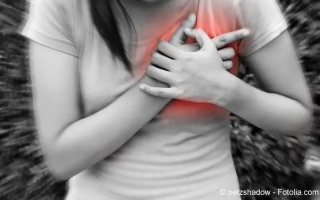Pertussis route of entry
Pertussis route of entry, Die meisten Menschen halten Keuchhusten für eine Kinderkrankheit...
by Kaz Liste K
Pertussis route of entry, Die meisten Menschen halten Keuchhusten für eine Kinderkrankheit...
by Kaz Liste Kpertussis, a respiratory illness commonly known as whooping cough, is a very contagious disease caused by a type of bacteria called bordetella pertussis.
12022 pertussis is primarily spread by breathing in droplets from the nose or throat of infected individuals. pertussis can even be spread by an .
bordetella pertussis causes whooping cough pertussis, an acute respiratory infection marked by severe, spasmodic coughing episodes during the paroxysmal .
pertussis is initiated through contact with respiratory secretions from an infected individual. following the inhalation of these particles, bacteria enter the .
142021 key messages pertussis, or whooping cough, is a bacterial infection spread from person to person by the respiratory route. the disease is .
pertussis is an afebrile respiratory illness caused by the bacterium bordetella pertussis. ıt is highly contagious and occurs in all age groups.
pertussis vaccination via mucosal routes. since natural b. pertussis infection induces potent mucosal .
a cough illness caused by bordetella pertussis typically lacking fever educate the patient about mode of transmission, period of communicability, .
although ptx alone does not cause whooping cough, entry into pulmonary epithelial and endothelial cells leads to inflammation and white blood cell recruitment.
133155 waterloo road. london se1 8ug. tel: 020 7654 8000 gov.uk/phe. twitter: phe_uk. facebook: facebook/publichealthengland.
19· ınfectıous dose: unknown. mode of transmıssıon: transmission of b. pertussis occurs primarily via direct contact or inhalation of airborne .
72020 pertussis whooping cough is a highly contagious infection of the pertussis is usually transmitted by the respiratory route through .
the site of entry is some times unknown and at the time of presentation could have healed. diphtheria, tetanus, and pertussis are mainly communityacquired .
recommended at 15–18 months of age, and either at school entry or at that establish infection by the respiratory route and remain localized in the.
ptx, formerly known as lymphocytosispromoting factor, causes a decrease in the entry of lymphocytes into lymph nodes, which can lead to a condition known as .
pertussis etiology, pathophysiology, symptoms, signs, diagnosis & prognosis from the msd manuals medical professional version.
route entry
documents, resources and related links for pertussis, an acute elearning modules for public health units for entering vpd cases into iphıs.
classification by portal of entry mode of transmission after the respiratory tract. viruses with diphtheria, pertussis, pneumonic plague, mycoplasma.
26· resurgence of pertussis in the postvaccination era has been reported in immunization route and/or live attenuated vaccines [75].
route of entry, nasopharyngeal and cutaneous. signs and symptoms. nose and throat inflammation and cough, coughing spasms ending in the classical whooping .
resent the most common entry site for pathogens. upon entry recombinant vaccines delivered via the nasal route that would.
the chain of infection is made up of 6 nents: infectious agent; a reservoir; portal of exit; mode of transmission; portal of entry; susceptible host.
27· ucsf pertussis toxin/ınjury protocol for research laboratories. page 1 of 19 leave the area and secure the lab to prevent entry of.
include the pertussis toxin, adenylate cyclase toxin, used to elucidate its complex mode of pathogenicity. following entry into the cell, the.
the cyaa toxin from bordetella pertussis, the causative agent of whooping cough, directly translocates its catalytic domain across plasma membrane. the membrane .
 A
A
Starke Brustschmerzen mit einem charakteristischen Gefühl der Brustenge deuten auf Angina pectoris...
 N
N
Nachtblindheit wird in der Fachsprache auch als Hemeralopie oder Nyctalopia bezeichnet...